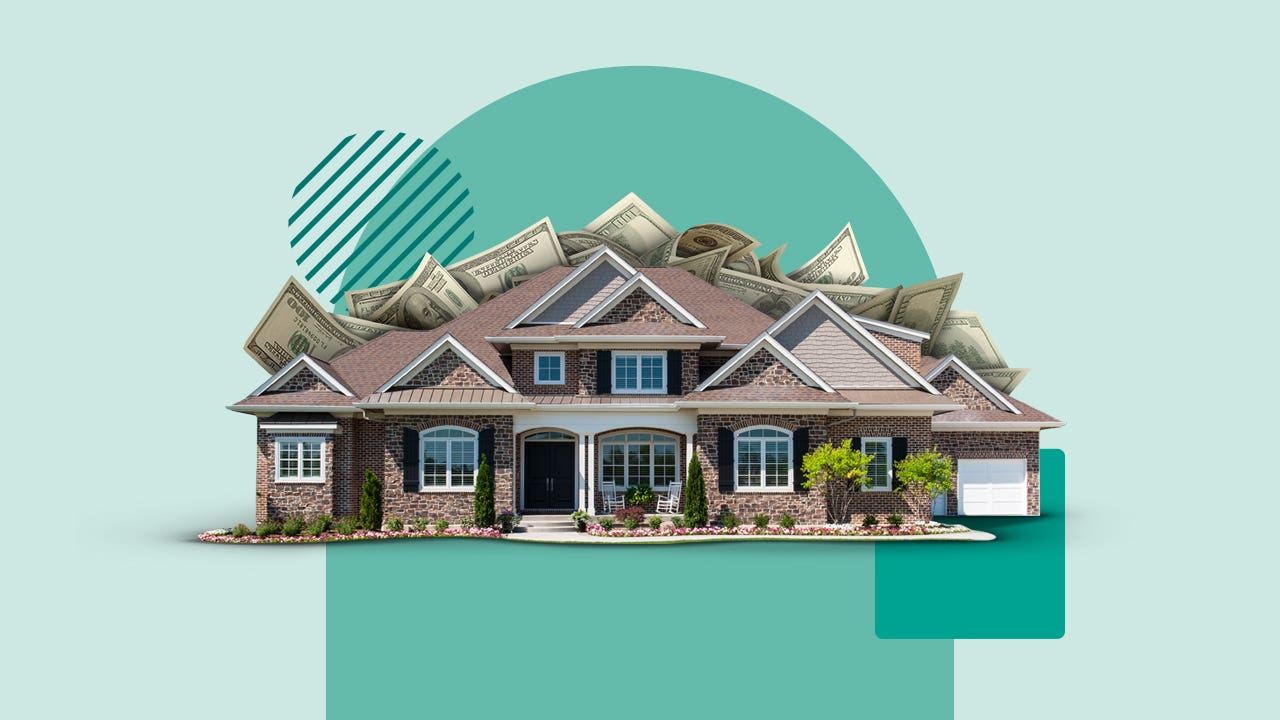What income do I need to afford a $1 million house?

The Bankrate promise
At Bankrate we strive to help you make smarter financial decisions. While we adhere to strict , this post may contain references to products from our partners. Here's an explanation for .
Dream of living in a spacious mansion, or even a modest home in an expensive location, like New York or San Francisco? Your desired property could easily run you $1,000,000 — close to triple the national median home price of $388,800. How much you need to earn to afford a million-dollar purchase depends on several factors, including, importantly, the interest rate of your mortgage.
You can use Bankrate’s mortgage calculator to help determine what income is needed for a million-dollar home: For a $1M purchase, assuming a 20 percent down payment and a 6.5 percent interest rate on a 30-year loan, your monthly principal and interest costs will total $5,056. That’s $60,672 per year on principal and interest alone — not including property taxes, insurance and homeowners association fees, which vary by location and will add to your total monthly payment. Let’s add another $1,000 per month for those costs and call the annual total $72,672.
A common housing-affordability guideline states that you shouldn’t spend more than about a third of your income on housing (see more on the 28/36 rule below). So, assuming an annual housing expenditure of $72,672, triple that to estimate the approximate annual salary you’ll need to make to comfortably afford that $1M purchase: $218,016.
Income to afford a $1M house
When considering whether you can afford a $1M house, the 28/36 rule is a good place to start. This rule of thumb recommends that you spend no more than 28 percent of your total income on your monthly housing costs, and no more than 36 percent on monthly debt payments overall.
Let’s see how the 28/36 rule checks out using the annual income determined above of $218,016 per year. Dividing that total by 12, it breaks down to $18,168 per month, and 28 percent of $18,168 is $5,087. So that would be the maximum amount you should spend on your mortgage payment per month (including principal, interest, property taxes, insurance premiums and possible HOA fees).
The 36 part of the equation is also important. Add up your total monthly debts, including not just your housing costs but also any car payments, credit card bills and student loans you may owe each month to ensure you don’t exceed that 36 percent mark. You don’t want your house payments to stretch your overall budget so thin that you can’t afford life’s other essentials. Don’t forget to factor in the costs of homeownership, including utilities, maintenance and upkeep.
One note about location: A $1M property can look very different depending on where you live. For example, in San Francisco, the median home sale price exceeds $1.3 million, per Redfin data, while the median in St. Louis, Missouri, is a mere $225,000. So a $1M house in St. Louis, which is likely to be a huge estate on a lot of land, provides far more value for the money than a $1M home in San Francisco, which will be a much more modest property (and may well be a condo or rowhouse with no land to speak of).
What factors determine how much you can afford?
A home’s list price is not the only consideration when it comes to figuring out how much house you can afford. Here are some other factors to think about:
- Down payment: The amount you put down upfront has a direct correlation to how much your monthly mortgage payment will be, because the more you pay, the less you have to borrow. The down payment is particularly important with high-priced homes: The standard 20 percent on a $1M property is a huge $200,000 outlay.
- Loan-to-value ratio: Your loan-to-value ratio, or LTV, is the percentage of your home’s total value that you’re borrowing. Your LTV is closely related to the size of your down payment.
- Debt-to-income ratio: DTI is the ratio of your gross monthly income to your monthly debt payments. Mortgage lenders want to see a low number here: The greater your DTI, the more you will be viewed as a risk.
- Credit score: Unlike the DTI, a higher number is better here. The stronger your credit score, the more competitive a mortgage rate you’re likely to be eligible for. Minimum credit score requirements vary by loan type.
- Financing options: First-time homebuyer programs and down payment assistance programs are a popular option for homebuyers looking to ease the burden of a down payment and closing costs. However, high-income borrowers in the market for expensive homes likely won’t qualify.
Stay the course until you actually close
It can take weeks or even months to close on a home purchase once you go into contract. Don’t stop considering the factors above until your deal is completely done — you don’t want to do anything that might alter your credit score, for example. Don’t make any big purchases that require financing (like a car), avoid applying for new credit cards and, if possible, try not to make any big life changes (like switching jobs or getting married) until after you’ve closed.
Working with a local real estate agent who knows your area well will help ensure a smooth homebuying experience. There’s a lot to consider at this price point, and an agent’s expertise will be invaluable. With this much money at stake, it’s wise to hire a real estate attorney as well — even if your state doesn’t explicitly require one — to make sure your interests are protected.
FAQs
-
A $200,000 annual salary breaks down to about $16,667 monthly. The 28/36 rule states that your monthly housing costs should not exceed 28 percent of your monthly income, and 28 percent of $16,667 is $4,667. For a $1M home, assuming a 30-year mortgage with a 20 percent down payment and a 6.5 percent interest rate, the monthly principal and interest payment comes to $5,056, not including taxes and insurance premiums. So, provided that your taxes and insurance do not exceed $389 per month, then yes, you can afford a million dollar home on a $200K salary.
-
Home affordability is determined by a number of factors. Besides the home’s actual list price, your mortgage type and interest rate, credit score, down payment amount and debt-to-income ratio will all influence your monthly housing payment. Your home’s location will determine property taxes, which vary greatly from place to place. Don’t forget to take into account the amount that you’ll spend on regular maintenance and upkeep.
Related Articles



